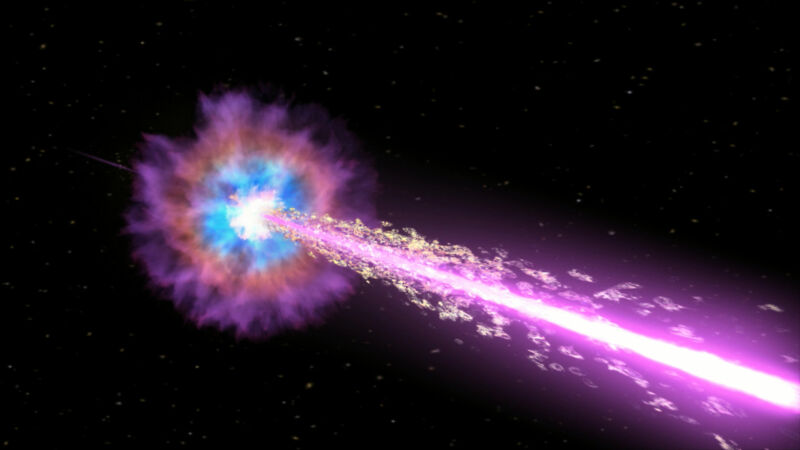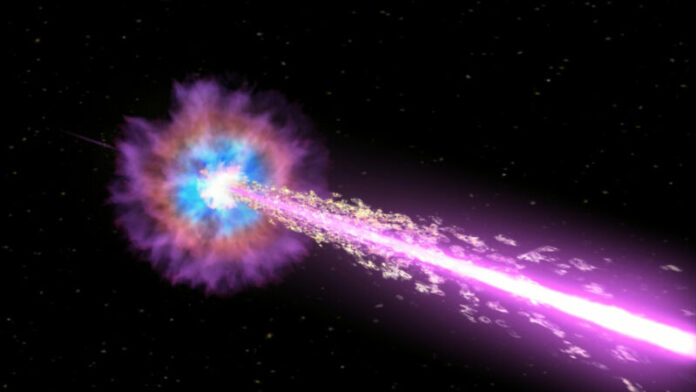
Enlarge / Artist's conception of a gamma-ray burst. (credit: NASA)
An astounding gamma-ray burst, dubbed GRB 221009A, continues to amaze even though it has been more than a year since it was detected. Scientists from Italy have recently published a study that shows how our planet’s ionosphere was impacted as a result of its high intensity and long duration.
The ionosphere is one of the Earth’s atmospheric layers, stretching from 60 km to more than 950 km in altitude. Containing electrically charged plasma, its lower half, called the bottom-side, extends until 350 km. Beyond 350 km lies the upper half, called the top-side.
Charging the top-side
According to Mirko Piersanti, who is a professor at the University of L’Aquila, gamma-ray burst effects have often been observed in the bottom-side but rarely in the top-side of the ionosphere. “That’s because the plasma density and conductivity in the top-side is much lower than the bottom-side. Also, to observe this effect, you need a satellite that can make observations, orbiting in this layer,” Piersanti said.
Read 8 remaining paragraphs | Comments
Ars Technica - All contentContinue reading/original-link]




